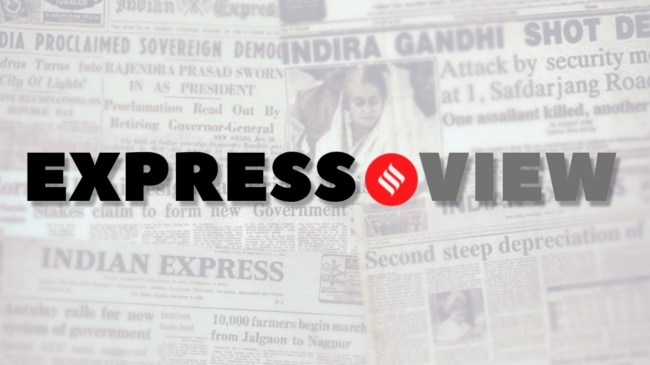Opinion Express View on SBI report: K-shaped questions
SBI report is far too quick to dismiss evidence of growing underlying inequality. The case it makes is unpersuasive
 The SBI report suffers from some fundamental flaws. If the government has been forced to extend the scheme of subsidised food grain to 800 million Indians, does it not suggest deep economic distress?
The SBI report suffers from some fundamental flaws. If the government has been forced to extend the scheme of subsidised food grain to 800 million Indians, does it not suggest deep economic distress? A new research report by the State Bank of India (SBI) seeks to “debunk” claims of India’s “K-shaped” economic recovery and asserts that the repeated use of the phrase is “flawed, prejudiced, ill-concocted and fanning interests of select quarters to whom India’s remarkable ascendance… is quite unpalatable”. A K-shaped recovery essentially suggests that there has been a stark difference in the way different sectors of the economy recovered after the pandemic. It indicates that while the overall economic growth numbers look robust, there is a growing underlying inequality. The SBI report’s arguments against it are far from persuasive.
The report says that the “patterns emanating from income, savings, consumption, expenditure and policy measures aimed at empowering the masses — from Ujjwala to Ayushman Bharat and from Awas Yojana to maternal/neo-natal welfare — question the efficacy of using ages-old proxies like low two-wheeler sales or fragmented land holdings to support some pre-destined narratives of India not doing well”. It argues that the muted post-pandemic sales of two-wheelers “could reflect households reconfiguring their savings towards physical assets (real estate) and a not too small buyers’ percentage shifting to used/entry-level cars (substitution effect)”. It cites data from Zomato as an example of rising disposable income in non-metro areas. And looks at the income tax data for FY22 to note that the Gini coefficient had declined significantly from 0.472 to 0.402 between FY14 and FY22. The decline in income inequality is because of a “Great Migration” at the bottom of the pyramid; 36.3 per cent of individual tax return filers belonging to the lowest income in FY14 have left the lowest income group and shifted upwards, finds the report.
The SBI report suffers from some fundamental flaws. If the government has been forced to extend the scheme of subsidised food grain to 800 million Indians, does it not suggest deep economic distress? In a country where a minuscule percentage of people pay direct income tax, how reasonable is it to draw conclusions from tax data about broader inequality? Isn’t income tax data nominal and as such affected by overall inflation? Why are tractor sales a better representative of the rural (not farm) economy than two-wheeler sales? The list of questions is longer than the report’s conclusions.






